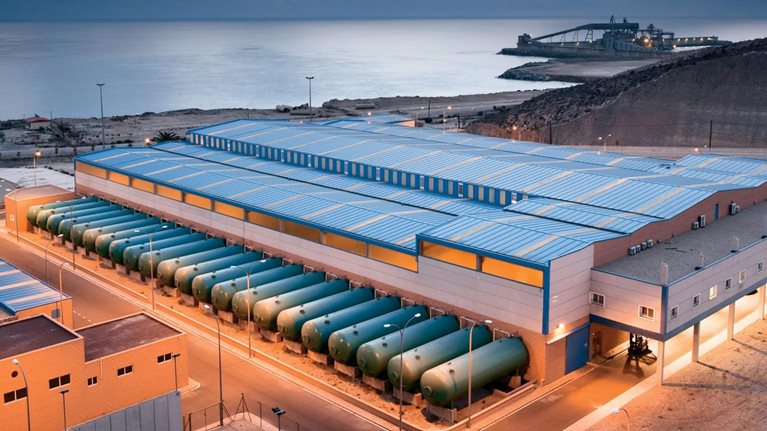Peter Brabeck-Letmathe, chairman of Nestlé, has repeatedly warned that water is becoming a scarce resource. Water tables are falling particularly fast in regions where agricultural output is increasing, such as in India. “The water crisis that seems possible within the next 10 to 20 years will therefore quite probably trigger significant shortfalls in cereal production and, as a result, a massive global food crisis,” he says.
A member of the European Roundtable of Industrialists and of the World Economic Forum’s foundation board, Brabeck-Letmathe has not been shy about using his public platforms to speak out on water issues. But what is Nestlé itself doing to conserve water? McKinsey Quarterly asked Peter Brabeck-Letmathe in October. His written responses to our questions follow.
The Quarterly: What challenges does water scarcity pose to a company like Nestlé?
Peter Brabeck-Letmathe: Water is, for us, a strategic issue. The main challenge is no doubt water security for the farmers who supply our factories all over the world. Farmers worldwide are the main users of water—70 percent of withdrawals, more than 90 percent of actual consumption—and they will be the most affected parties in case of a massive water shortage. In 2003, Frank Rijsberman, then the head of the International Water Management Institute, had expressed his concern: “If present trends continue, the livelihoods of one-third of the world’s population will be affected by water scarcity by 2025. We could be facing annual losses equivalent to the entire grain crops of India and the US combined.” This is a frightening scenario. Needless to say, such a global crisis would affect all companies, not only those from the food industry.
A second challenge is the water we use in our bottling and manufacturing processes. In bottled water, quality matters much more than quantity. Quality is also key for some of our processes: water, for instance, is still one of the best solvents that we use, among other things, to gently decaffeinate coffee. Last but not least, consumers need access to safe and high-quality water to prepare many of our products.
The Quarterly: What steps is Nestlé taking to address these issues?
Peter Brabeck-Letmathe: Water has been on the Nestlé corporate agenda long before environmental policies and sustainability became an issue; the first wastewater-treatment plant for one of our factories was built back in the 1930s. Despite the fact that we are a modest water user,1 with less than 1.8 liters per dollar of sales, we have made huge efforts to reduce water withdrawals for our factories. Withdrawals were close to 5 liters per dollar of sales some ten years ago. They are now below 2 liters, and we continue our efforts to further reduce them. At the same time, we make sure the water withdrawn is returned to nature in good quality.
There are other ways for us to contribute to reducing water abstraction. One is by reducing waste in the supply chain. In more concrete terms, this means doing our job and extending our efficient business processes to areas where less efficient operators are active. Let me illustrate this with an example. In a traditional milk supply chain—with open, uncooled containers from farm to consumer, on oxcarts or bikes—losses of milk are on the order of 16 to 27 percent.2 When Nestlé collects milk directly from farmers and uses refrigerated trucks to transport it, these losses go down to less than 0.6 percent.
Based on the total amount of milk Nestlé purchases directly each year in countries such as Pakistan, India, and China (that is, in relatively difficult climatic conditions) and further on the average water requirements for producing milk on farms, this reduction in waste means savings on the order of 815 million to 1,375 million cubic meters of water a year.3 The total water savings on our directly purchased milk alone—thanks to our logistics, processing, and packaging—outweigh our total annual water withdrawals (147 million cubic meters of water a year) five to eight times. And what is key: the positive impact of our efficient supply chain for milk happens to be greatest in countries where the water situation is most dire.
The Quarterly: Would a price for water help to improve water productivity, and how would introducing such a price affect Nestlé’s business?
Peter Brabeck-Letmathe: Water—by far the most valuable resource on this planet—is treated as if did not have any value at all. We often do not even know the cost of providing it; the true number is buried under open and hidden subsidies, taxes, and the sunk costs of municipal and regional water and irrigation departments. This is particularly true for water used in agriculture. The problem is not that farmers use water; the problem is that they very frequently use it inefficiently. We see sprinklers turning at noon, unlined irrigation canals where water is seeping away faster than it actually flows, and a lack of both interest and incentives to invest in drip irrigation. Water, too often, has no price. It is seen and treated as a free good, or the price for farmers is far below what others have to pay.
Full cost recovery must be implemented for all those who today get massively subsidized municipal tap water (also to fill their swimming pools) and who can actually afford to pay. This is necessary to finance the huge amount of infrastructure required to reduce leakage losses in municipal water supplies—up to 70 percent—and to provide the financial means to extend them to those who do not have access. That not only includes the close to one billion people with no access to safe water but also the far more than two billion people with access to so-called improved water sources, which in reality often means that women have to carry the daily water needs of their families some kilometers from the source to the home.4
What do the principles of full cost recovery mean for a company? Nestlé and the consumers of bottled water are already paying fully for the infrastructure: the bottling plant and the distribution network. Due to a lack of transparency regarding water tariffs in general, it is not always quite clear whether the tariff paid by a company for withdrawn municipal water for production and for wastewater effluent treatment always covers the full infrastructure costs. In areas where Nestlé relies on municipal water, the cost impact of an assumed increase of tariffs to, say, the levels found in Germany, would be on the order of a very small fraction of cents per dollar of our sales, based on our average of less than 1.8 liters of water withdrawn per dollar of sales. That’s not very much.
Covering the full cost of water infrastructure is much more difficult for farmers. But it is also possible. In Oman, farmers draw from a 4,500-year-old water system that is still functioning.5 Once the water arrives at a village, from underground sources and mountain springs, channeled over many kilometers, all villagers, guests, and travelers get free access to the drinking water they need. The canal then goes to the mosque: water is also free for ceremonial washing, and some is set aside and sold to finance the mosque and the school. After that, the water becomes private property in defined shares, days, hours, or minutes of rights to use it for irrigation. The rights are inherited and, even more important, tradable. In frequent auctions, parts of the water rights can be sold and purchased or leased within the village community. If a farmer does not need water temporarily, he leases it to another farmer who has additional land available to grow a crop. If a farmer wants to invest in more efficient irrigation, he can finance this investment by selling water rights permanently. Thus, water gets a market price set by those who know best: the farmers. This is an extremely strong incentive to use water efficiently.6 Since the market price varies over the year, this is a much smarter approach to efficiency than, for example, so-called water footprint calculations. And since farmers trade among themselves, the price places no additional financial burden on them.
The Quarterly: At what level is leadership on this issue most critical—global or local, public or private?
Peter Brabeck-Letmathe: Probably, local public leadership is most important. Political leaders within an area, in dialogue with the main stakeholders, have to develop and implement a clear strategy to manage water abstraction efficiently in order to overcome the risk of structural water shortages—a strategy that also includes market mechanisms. Success is possible neither piecemeal nor in isolation; it requires solutions found through multistakeholder dialogue. Success will also require full involvement and participative responsibility. At a global level, a framework is needed to make sure local measures can succeed. Among the requirements at the global level: start addressing the issue of water subsidies that risk distorting markets for the necessary flows of virtual water (embedded in farm products) between regions. Another requirement: liberalize agriculture, the sector where efficient water use is most urgent.


